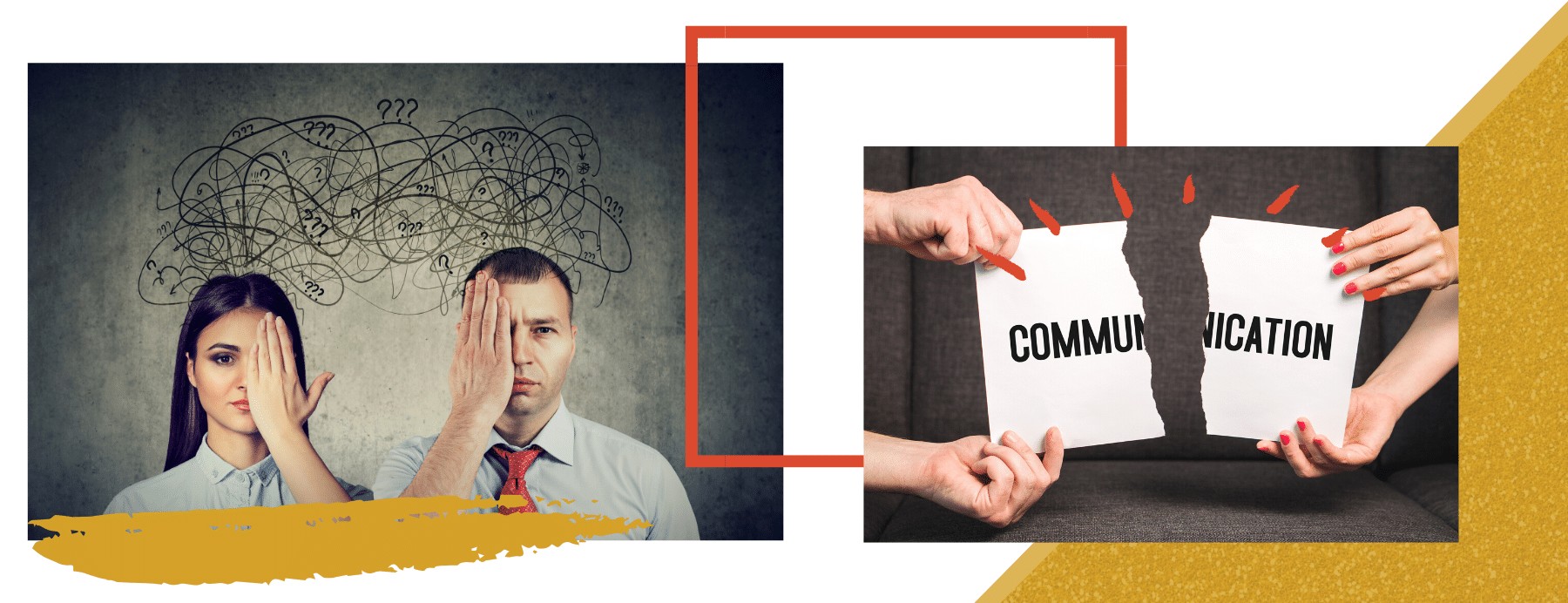How to Improve Your Conversation Skills and Become a Creative Problem Solver
In the professional life of many business leaders, the art of conversation plays a vital role in enabling teams to effectively communicate their needs and brainstorm innovative ideas. However, this can be challenging in environments dominated by rigid rules and a resistance to change. This often stems from a mindset of “That’s just the way it’s always been done” or a fear of risk-taking. These attitudes can prematurely end meaningful conversation and inhibit the generation of new ideas. That’s where learning how to improve your conversation skills can drastically change the playing field.
Today, we delve into a conversational skill and cultural tool that services two purposes. It facilitates smoother daily interactions and even fosters a sense of camaraderie through team-building exercises.
We spotlight a principle celebrated in Improv, renowned for its remarkable ability to create spontaneous magic on stage and in social settings. The “Yes, and…” approach! This isn’t merely a technique for casual conversation, though. It’s a transformative strategy that can revolutionize how individuals, teams, and even entire companies communicate. Adopting this mindset encourages open-ended questions, fosters active listening, and promotes a positive attitude – all of which are essential components of strong conversation skills and effective team dynamics.
5 Steps on How to Improve Your Conversation Skills and Become a Creative Problem Solver
The five ways to improve your communications and be more innovative are the following:
- Start with “Yes, and…” to create agreement, enthusiasm and options
- Understand the drawbacks of “no” so you can avoid its pitfalls
- Learn how “Yes, and…” generates opportunity instead of problems
- Using “Yes, and…” in daily conversations keeps possibility alive
- Be aware of this one fatal trap of negativity!
How to Improve Your Conversation Skills Tip #1: Start with “Yes, and…” to create agreement, enthusiasm and options
The essence of Improv’s enchanting effect lies in a simple yet powerful principle: accepting what’s presented and then adding to it. This approach is the key to conjuring up vibrant characters, dynamic scenes, and entire worlds on stage.
In the world of Improv, when a player presents an idea, their counterpart responds with a resounding “Yes!”—a verbal and nonverbal communication of agreement—and then contributes their own creative input. Although it’s not mandatory to explicitly say “Yes, and…”, this practice is encouraged for beginners to develop it into a natural response.
Take, for example, a scenario where Player A says to Player B, “Captain, we’ve been hit by a torpedo!” Player B, embracing the role of Captain, agrees and acts accordingly, enhancing the narrative. This is good conversation skills in action—no denial, no quest for ‘better’ ideas, just building on what’s given.
Conversely, a poor response derails the scene
If Player A offers a mimed rifle and Player B contradicts with, “That’s not a rifle, it’s a bouquet,” the scene flounders, leaving the players in a lurch. This isn’t just about being a good conversationalist; it’s about keeping the momentum going.
“Yes, and…” may seem alien in a conventional, rigid world, but it’s a learned skill vital for good communication skills, requiring regular practice to master. Let’s consider its application in everyday situations.
Imagine you’re a banker in a business meeting and a colleague suggests, “Maybe we could process Paycheck Protection loans via email to speed up the process.” A productive response would be, “Yes, let’s explore that option,” demonstrating an open mind and a readiness to find common ground. The traditional, hesitant response of “I don’t know. The regulations may not allow it” closes the door to potential solutions and stifles innovation.
The first approach seeks solutions and keeps the conversation going, while the second halts creative thinking before it even begins. Adopting the “Yes, and…” mindset in professional lives, from business meetings to casual chats, can transform how we interact, solve problems, and collaborate with different people. Understand this and learning how to improve your conversation skills will come all the more easily.
How to Improve Your Conversation Skills Tip #2: Understand the drawbacks of “no” so you can avoid its pitfalls
Usually, if you ask someone something, the default answer is “No.” People sometimes say “No” because they don’t want to overcommit to something, they fear they’ll be taken advantage of, or maybe they legitimately don’t like the task or person asking.
In actuality, most often, people are saying “No” when they mean “I haven’t thought about it yet.”
For example, I used to work in a cubicle at Citibank. One day, I went to my neighbor Tom’s cube to ask if he could help with a bit of programming logic.
He quickly said, “No.”
But then he stopped what he was doing, turned around to me and said, “Oh… um… yeah. I can do that.” He didn’t mean the No. He just said it to buy some time until he could think about fitting it in. People do this all the time!
Most people say “No”, when all they really need is a moment to think about it
Sometimes people have a hard No to some things based on their personality, upbringing, and preferences. No is perfectly acceptable in those situations.
It’s not like if someone says, “Let’s steal this car,” you should immediately agree with them! You have moral, legal, and personal reasons not to do some things. Cool. Keep to your principles.
What we’re talking about today is the all-too-easy, quick No that pervades our language when people mean “I haven’t thought it through yet.”
“You can never get more by saying ‘No.’ You can hold a current position by saying “No,” but you can only move forward by saying ‘Yes.'” – Marshall Sylver
How to Improve Your Conversation Skills Tip #3: Learn how “Yes, and…” generates opportunity instead of problems
The “Yes, and…” technique in communication, particularly in professional settings like business meetings or with clients, carries a crucial nuance that’s essential to grasp. It’s not an automatic agreement to perform exactly as requested immediately; rather, it signifies an open mind and a willingness to explore options. Essentially, “Yes” acknowledges the request, showing that you’re actively listening and understanding the speaker’s point of view.
The “and…” part is where the conversational skills truly shine. It involves delving into a deeper conversation to examine and work through various possibilities to meet the demand effectively. This approach differs significantly from a simple “Yes,” which could be misconstrued as an immediate agreement to fulfill the request as is.
This distinction is so vital that it bears repeating, as it can drastically change the dynamics of your professional and personal interactions.
To illustrate…
To illustrate, let’s consider the experience of Angela, a financial advisor. During a break in a multi-week workshop, Angela reached out, overwhelmed by the burden of agreeing to every request. Her situation was a classic case of saying “Yes” without the “and…” – leading to an overloaded schedule and heightened stress.
Through our conversation, Angela discovered the transformative power of “Yes, and…”, which allowed her to become more collaborative and solution-oriented with her colleagues. This newfound approach didn’t just make her more agreeable; it positioned her as the “go-to” person in her workspace.
Leaders often worry about overcommitting to clients. Here, “Yes, and…” can be a game-changer. By responding with, “Yes, I understand your request, and let’s explore a solution that benefits everyone,” you engage in effective ways of problem-solving. This not only fosters good communication skills but also ensures the client feels heard and valued. This strategy is far preferable to leaving a client frustrated due to a perceived lack of attentiveness. In essence, “Yes, and…” isn’t just a phrase, it’s a pivotal tool in maintaining productive, respectful, and innovative conversations in all areas of social and professional life.
How to Improve Your Conversation Skills Tip #4: Using “Yes, and…” in daily conversations keeps possibility alive
The essence of the “Yes, and…” technique isn’t to transform you into someone who acquiesces to every demand, becoming a target for extra workload. Rather, it’s a conversational skill that fosters creativity and cooperative dialogue, contributing to better social skills and a harmonious environment, whether in a social setting, business meeting, or casual chat.
Consider this scenario: if my son asks for a new video game console costing $250, instead of a flat denial, I might respond with, “Yes, I understand your desire for it, and let’s brainstorm ways to achieve this.” This approach opens up a dialogue where we could explore options like doing extra chores, seeking help from relatives, or adding it to his birthday wishlist. This method of engaging in small talk and offering practical tips not only keeps the conversation going but also builds a sense of mutual interest and collaboration.
Even if he doesn’t get the console immediately, the possibility remains open, leaving him hopeful and satisfied. More importantly, it nurtures our relationship, as he enjoys the process of discussing and devising solutions with his father. A blunt “No” could have left him feeling dismissed and resentful.
Used in a professional context
If asked to undertake a sizable project, a good way to respond might be, “Yes, my team can tackle that if we schedule it for next month,” or “Yes, provided we have the necessary budget,” or even “Yes, let’s check if Joe’s team can assist us in meeting your urgent deadline.” This shows not only good communication skills but also emotional intelligence, as you acknowledge the request and propose feasible solutions.
It’s vital to say “Yes” to tasks that align with your role and capabilities, balancing willingness with practicality. However, in instances where your initial reaction might be “No,” adopting the “Yes, and…” strategy can lead to more productive outcomes, demonstrating that you’re a great conversationalist who pays close attention to others’ needs while also considering your own limits. This approach is an essential part of not just maintaining but enhancing personal and professional relationships.
How to Improve Your Conversation Skills Tip #5: Be aware of this one fatal trap of negativity!
In many professional and personal interactions, there’s a seemingly benign response that can unexpectedly hinder effective communication: the notorious “Yes, but…” This phrase often appears innocuous, yet it can be detrimental to both business meetings and casual chats.
At first glance, “Yes, but…” seems to blend acknowledgment with gentle critique. It’s like offering a warm smile before delivering less favorable news. However, this approach can inadvertently convey a dismissive tone. Essentially, it translates to a contradictory “Yes, but… No!”, which can be both confusing and disheartening.
Consider a scenario where you excitedly present a well-thought-out idea to your supervisor. As she listens with good eye contact and nods, you feel a surge of confidence. But when she responds with, “Yes, that’s a great idea, but…”, the initial encouragement quickly turns to disappointment. This “Yes, but…” raises hopes only to shatter them, a pattern far too common in various social settings.
Observe this dynamic in your professional life over the next few days. Notice how the speaker’s facial expressions and body language shift from positive to deflated as the conversation progresses from “Yes” to “but”.
Instead of falling into the “Yes, but…” trap, I advocate for the “Yes, and…” approach, fostering a two-way street in communication that leaves everyone feeling valued and heard. If “Yes, and…” isn’t feasible, a straightforward “No” is more respectful than raising and then dashing hopes. Continuously using “Yes, but…” can lead to a series of negative notations in people’s minds, gradually eroding trust and open communication, vital for personal relationships and team dynamics.
Hence, make it a point to steer clear of the “Yes, but…” response, embracing a more constructive and supportive way of conversing that enhances both individual and collective communication skills.
Now you try: Agree and add on to everything!
Try it for a week. See if you can “Yes, and…” every request that comes your way. You just might find that the average person enjoys talking with you more. You’ll become more friendly, agreeable, and a creative problem solver.
If you create a culture of “Yes, and…” people will communicate more freely and getting results will become an easy, natural thing everyone does automatically.
You could just read this and say “Nice idea” but not try it. That’s how most people read things.
But you want to better yourself, right?
Do you want to be more successful in your communications, your relationships, and your life?
Will you try to “Yes, and…” things this week?


